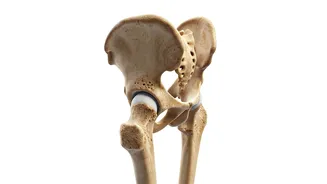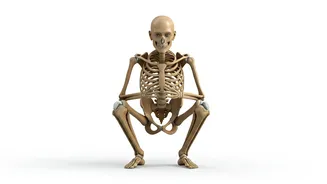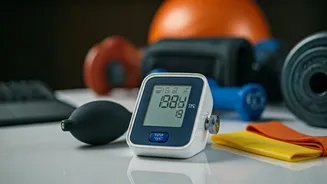Importance of Exercise
Regular physical activity is pivotal in preserving bone health, and it's especially critical after the age of 30. Bone density naturally diminishes as
one grows older, increasing the risk of osteoporosis and fractures. Engaging in specific types of exercises can effectively counteract this decline, promoting the formation of new bone tissue and increasing bone strength. The right exercise routine stimulates the cells responsible for bone growth and repair, which subsequently leads to denser, more resilient bones. Moreover, exercise can enhance balance and coordination, lessening the chance of falls that can result in fractures. Therefore, including exercise in your routine is a proactive strategy to maintain bone health and overall physical well-being. It is recommended to consult with a healthcare professional or a certified fitness trainer before starting any new exercise regimen to ensure it aligns with your individual needs and physical condition.
Weight-Bearing Exercises
Weight-bearing exercises, where your body works against gravity, are among the most effective for bone health. These activities place stress on the bones, prompting them to adapt and become stronger. Examples include brisk walking, jogging, and dancing. Walking, a readily accessible exercise, can be done for 30 minutes most days of the week to stimulate bone development in the legs, hips, and spine. Jogging, on the other hand, provides a more intense workout, further enhancing bone density, but it is important to pace yourself, especially if you are new to this type of exercise. Dancing is another enjoyable form of weight-bearing exercise that not only strengthens bones but also improves balance and coordination. The impact of your feet hitting the ground during these activities sends signals to your bones, encouraging them to increase in density. Aim for at least 150 minutes of moderate-intensity weight-bearing exercise each week to see significant benefits.
Resistance Training Benefits
Resistance training, such as lifting weights or using resistance bands, is another key component for improving bone health. These exercises involve working muscles against a form of resistance, thereby creating mechanical stress on the bones. This stress stimulates bone cells, encouraging bone formation. Weightlifting is particularly effective, and it can be tailored to various fitness levels. Start with lighter weights and gradually increase the load as your strength improves. Resistance bands offer a convenient alternative, providing resistance without the need for weights. Exercises like squats, lunges, and bicep curls are great examples of how to incorporate resistance training into your routine. They target major muscle groups, promoting bone health throughout your body. Aim for at least two to three resistance training sessions per week, working all major muscle groups during each session to maximize benefits. Remember to focus on proper form to prevent injuries and to consult a trainer if you're unsure about the correct techniques.
Impact Exercises
Impact exercises, involving high-impact movements, are also beneficial for bone health. These exercises place significant stress on the bones, stimulating bone density and promoting bone formation. Jumping jacks, jumping rope, and plyometrics are examples of high-impact exercises. Jumping jacks are simple to incorporate and can be done virtually anywhere. Jumping rope is more intense, but it is an effective way to improve bone density while also improving cardiovascular health. Plyometrics, like box jumps and jump squats, are advanced exercises, and should be introduced gradually to reduce the risk of injury. These activities provide a powerful stimulus for bone growth, particularly in the lower body and spine. However, it's essential to start slowly and gradually increase the intensity and duration of these exercises. Begin with a few minutes and slowly build your capacity. As with all exercises, ensure you have proper form and consider any pre-existing health conditions that might require modification. Consulting with a healthcare professional or certified fitness trainer is also advisable before undertaking high-impact exercises, especially if you have a history of bone or joint issues.
Balance and Flexibility
Exercises that improve balance and flexibility contribute significantly to overall bone health by minimizing the risk of falls. Practicing balance exercises, such as standing on one leg or using a balance board, strengthens the muscles involved in maintaining balance and coordination. Yoga and Pilates are excellent choices for enhancing balance, flexibility, and core strength, all of which contribute to fall prevention. These practices also promote flexibility, making your body more adaptable and less prone to injury. Regular stretching and flexibility exercises improve range of motion and reduce muscle stiffness, which improves stability and the ability to maintain balance. As individuals age, their balance tends to decline, thus, incorporating these exercises into your routine is vital. Aim for incorporating balance and flexibility exercises at least two to three times per week. Starting slow and gradually increasing the difficulty is always recommended. This holistic approach ensures that not only bone strength is improved, but also your overall physical fitness, reducing the risk of injuries and maintaining an active lifestyle.













